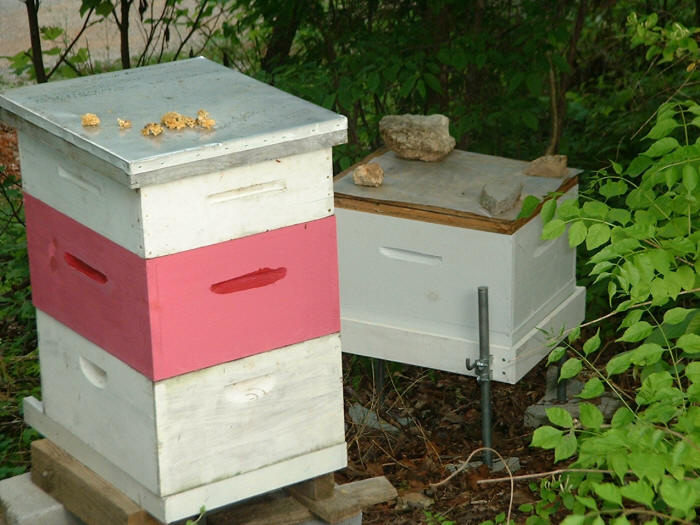|
Chickens
We have
Americana
(green/blue egg layers),
Marans
(darker brown egg layers) and a mixed flock of
brown-egg laying hens, but, we're able to sell pure
Americana
and
Maran hatching eggs, chicks and sometimes the laying
hens to make room for new hens.
Our rooster “GQ” and his ladies
The Americana gets its name from the
Indian tribe of Chile, Araucana, where they were first discovered
and the mix with American breed chickens. They lay beautifully
colored eggs of shades varying from turquoise to olive. These birds
make an absolutely beautiful laying flock that is extremely hardy.
Baby chicks will come in all colors, plain and fancy.
The Marans breed was developed in the
early 1900s as a dual purpose utility, and their eggs, like those of
the Welsummer, are an extremely dark brown. The breed takes its name
from the French town of Marans, but most North American Marans are
of English extraction. The importance of this is that the English
version is clean legged, but in its native France the breed is
raised with sparsely feathered legs (I have both clean and feathered
leg hens, the rooster is clean-legged). All Marans (even Blacks)
have white legs.
Bees
We started out with one beehive purchased through trade for a goat.
Since then we've made splits, captured swarms and won hives
through our local Roane-Morgan Beekeeping Association. We now
have nearly 30 hives (half of which are for sale). Those of us
who have got into beekeeping often get what is called "bee
fever." This is a
business with many facets and gives our whole
family an opportunity to learn more about nature and the role of
the productive honey bee. We are also members of the Tennessee
State Beekeepers Association. We are still learning about this
business and continue to enjoy not only the honey
but also the beeswax products, including creams, lotions, lip
balms and soaps. The modern use of hive products has changed
little since ancient time.
Beekeeping
is one of the oldest forms of food production. Some of the
earliest evidence of beekeeping is from rock paintings. It was
particularly well developed in Egypt and was discussed by the
ancient Roman writers. Western honeybees are not native to the
Americas. Our bees are the Carniolan variety. This bee is a
subspecies of the Western honeybee that is from a region of
Slovenia. It is favored among beekeepers for several reasons, not
the least being its ability to defend itself successfully against
insect pests while at the same time being extremely gentle in its
behavior toward beekeepers. These bees are particularly adept at
adjusting worker population to nectar availability. It rapidly
expands worker bee populations after nectar becomes available in
the spring, and cuts off brood production when nectar ceases to be
available in quantity. With high worker populations they store
large quantities of honey. They are resistant to some diseases and
parasites that can debilitate hives of other subspecies.

|